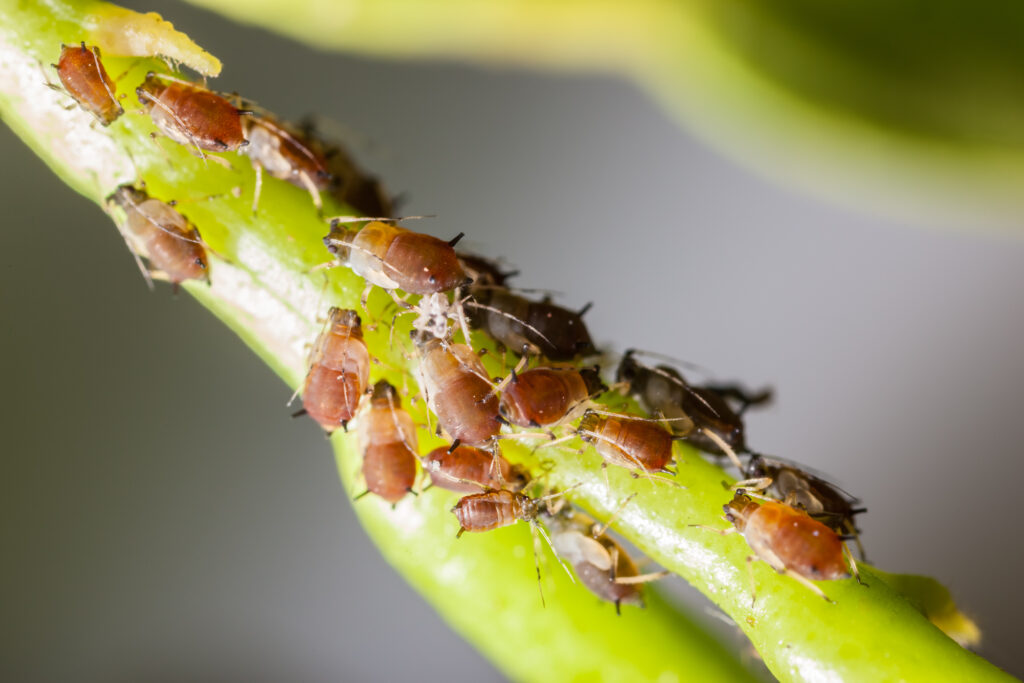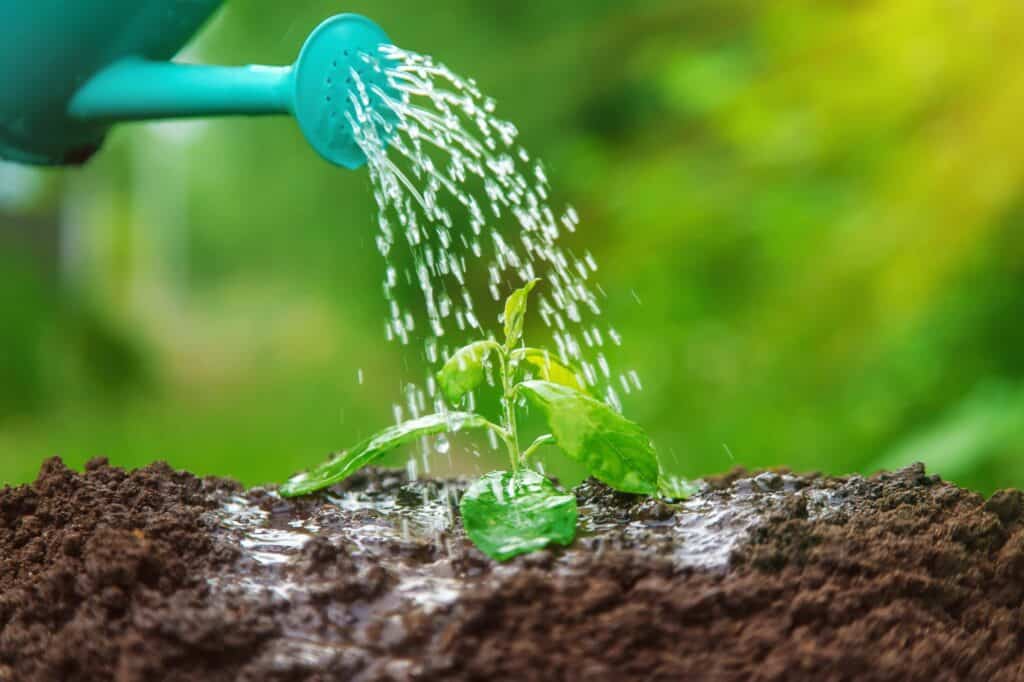Onion leaves turning yellow can be a cause for concern for gardeners and farmers alike. Yellowing leaves can be a sign of various problems, including nutrient deficiencies, pests, diseases, and environmental factors.
Understanding the causes and treatments of yellowing onion leaves is essential to prevent further damage and ensure a healthy harvest.
To start, it is important to understand the basics of onion growth and development. Onions are biennial plants that grow from bulbs. They require well-draining soil, full sun exposure, and regular watering to thrive.
Onion leaves are an essential part of the plant’s growth, as they are responsible for photosynthesis and nutrient absorption. When onion leaves turn yellow, it can indicate a problem with the plant’s ability to perform these functions.
There are several causes of yellowing onion leaves, including nutrient deficiencies, pests, diseases, and environmental factors. Identifying the cause of yellowing onion leaves is essential to determine the best course of treatment and prevention strategies.
In this article, we will explore the various causes of yellowing onion leaves and provide tips on how to treat and prevent further damage.
Key Takeaways
- Yellowing onion leaves can be a sign of various problems, including nutrient deficiencies, pests, diseases, and environmental factors.
- Understanding the basics of onion growth and development is essential to prevent further damage and ensure a healthy harvest.
- Identifying the cause of yellowing onion leaves is essential to determine the best course of treatment and prevention strategies.
Also don’t miss:
- Oak Tree Leaves Turning Yellow in Summer
- Norfolk Pine Turning Yellow
- New Fescue Grass Turning Yellow
Understanding the Basics

Anatomy of Onion Leaves
Onion leaves are an important part of the plant’s anatomy. They arise from the base of the onion bulb and are made up of leaf blades, sheaths, and roots.
The leaf blades are the flat, green part of the leaf that photosynthesize and produce the plant’s energy. The sheaths are the tubular part of the leaf that wraps around the stem, while the roots anchor the plant in the soil and absorb water and nutrients.
Onion leaves are arranged in a basal rosette, which means they grow from the base of the plant in a circular pattern. As the plant grows, new leaves emerge from the center of the rosette and older leaves die off. The age of the leaves can be an important factor in determining why they may be turning yellow.
Onion Growth Cycle
Understanding the growth cycle of onions can be helpful in identifying why their leaves may be turning yellow. Onions are classified as a biennial plant, which means they complete their life cycle over two growing seasons. In the first year, the plant produces a bulb and leaves. In the second year, the plant produces a flower stalk and seed.
Onions can be grown from seed or transplants. Seedlings emerge from the soil with two small leaves, called cotyledons, and develop into mature plants with multiple leaves.
Green onions, also known as scallions, are harvested before the bulb has a chance to form and are typically sold as bunches. Shallots, chives, and leeks are other members of the Allium family, which also produce edible leaves and bulbs.
When planting onions, it is important to choose the right time of year and soil conditions. Onions prefer well-draining soil with a pH between 6.0 and 7.0. They can be planted in the spring or fall, depending on the variety. Transplants can be started indoors and then moved outside when the weather warms up.
Onion Leaves Turning Yellow – 4 Common Problems
Yellowing onion leaves can be a sign of various issues that affect the health of the plant. Here are some of the most common causes of yellowing onion leaves:
1. Diseases and Pests

Onion plants are susceptible to a variety of diseases and pests that can cause yellowing of the leaves. Some common diseases include pink root disease, downy mildew, and purple blotch.
Pests such as onion maggots and thrips can also cause damage to the plant, leading to yellowing and wilting of the leaves. Infestation of nematodes, bacteria, and fungus can also lead to yellowing and wilting of the leaves. It is important to identify the specific disease or pest infestation to take appropriate action.
2. Watering Issues
Overwatering or underwatering can also cause yellowing of the leaves. Onion plants require consistent moisture in the soil, and overwatering can lead to root rot and yellowing of the leaves.
On the other hand, underwatering can cause stress to the plant, leading to yellowing and wilting of the leaves. It is important to maintain a balance in watering the onion plants.
3. Nutrient Deficiencies
Onion plants require specific nutrients such as nitrogen, phosphorus, and potassium to thrive. A lack of these nutrients can cause yellowing of the leaves and stunted growth. It is important to ensure that the soil has the required nutrients for the onion plants to grow healthily.
4. Temperature Stress
Onion plants are sensitive to temperature changes, and extreme heat or cold can cause yellowing and wilting of the leaves. Frost can also damage the plant, leading to yellowing and wilting of the leaves. It is important to provide appropriate protection to the plants during extreme weather conditions.
Treatment and Prevention Strategies
When it comes to yellowing onion leaves, there are a few treatment and prevention strategies that can help gardeners maintain healthy onion plants. These strategies include proper watering techniques, nutrient management, pest control, and disease management.
1. Proper Watering Techniques

Proper watering techniques are essential for maintaining healthy onion plants. Overwatering or underwatering can cause yellowing of onion leaves. Onion plants thrive in soil with consistent moisture, which means they should be watered properly and on a regular basis.
Gardeners should aim to keep the soil moist but not waterlogged. Mulching can help retain moisture in the soil and reduce the need for frequent watering. Additionally, gardeners should avoid watering onion plants from above, as this can cause water to collect in the crevices of the leaves, leading to disease.
2. Nutrient Management
Onion plants require adequate nutrients to grow and thrive. Gardeners should ensure that their soil is rich in organic matter and nutrients like nitrogen, phosphorus, and potassium.
Spring onions, garlic, and lettuce are good companion plants for onions, as they can help to improve soil fertility. Gardeners should also fertilize their onion plants regularly with a balanced fertilizer to ensure that they are receiving the necessary nutrients.
3. Pest Control
Pests like leek moth and onion thrips can cause yellowing of onion leaves. Gardeners should inspect their onion plants regularly for signs of pest infestation.
If pests are detected, gardeners can use organic pest control methods like neem oil or insecticidal soap to control the infestation. Additionally, crop rotation can help prevent pest infestations by disrupting the life cycle of pests.
4. Disease Management
Diseases like fungal and bacterial diseases, as well as wilt diseases, can cause yellowing of onion leaves. Gardeners should inspect their onion plants regularly for signs of disease, such as wilting or yellowing leaves.
If diseases are detected, gardeners can use organic disease control methods like copper fungicides or sulfur to control the disease. Additionally, crop rotation can help prevent the spread of diseases by reducing the buildup of pathogens in the soil.
Harvesting and Storage Tips

When harvesting onions, it is important to wait until the leaves have turned yellow and started to dry out. This indicates that the onion bulbs have stopped growing and are ready to be harvested. At this point, gently lift the bulbs out of the soil, taking care not to damage them.
Once the onions have been harvested, it is important to cure them properly to ensure they last as long as possible. To do this, lay the onions out in a warm, dry place with good ventilation.
This could be a shed, garage, or even a sunny windowsill. Leave the onions to cure for a couple of weeks until the outer skins have become papery and the necks have dried out.
Once the onions have been properly cured, they can be stored in a cool, dry place. A pantry or cellar is ideal, but a kitchen cupboard will also work. Avoid storing onions near potatoes, as the two vegetables can cause each other to spoil more quickly.
When storing onions, it is important to keep them dry and well-ventilated. Storing onions in a mesh bag or wire basket is a good way to achieve this. Alternatively, onions can be stored in a cardboard box with holes punched in the sides for ventilation.
It is worth noting that raw onions can cause eye irritation and make people cry. To minimize this, it is recommended that onions are stored in a separate area of the kitchen away from other foods. Additionally, refrigerating onions for about 30 minutes before cutting them can help reduce eye irritation.
Frequently Asked Questions
What causes onion leaves to turn yellow?
Onion leaves turning yellow can be caused by a variety of factors. Some of the most common reasons include overwatering, underwatering, nutrient deficiencies, pests, and diseases. If the yellowing is accompanied by wilting or browning, it may be a sign of a fungal or bacterial infection.
How can I prevent onion leaves from turning yellow?
To prevent onion leaves from turning yellow, it is important to ensure that the plants are getting the right amount of water, nutrients, and sunlight. Proper crop rotation can also help prevent the buildup of pests and diseases in the soil. Using organic fertilizers and pesticides can also help maintain the health of the plants.
What are the signs of overwatering onions?
Overwatering onions can cause the leaves to turn yellow and wilt. The soil may also become waterlogged, and the roots may start to rot. In severe cases, the bulbs may become soft and mushy.
What are the signs of underwatering onions?
Underwatering onions can cause the leaves to turn yellow and dry out. The soil may also become hard and dry, and the plants may wilt during the hottest part of the day. In severe cases, the bulbs may become stunted and fail to mature.
How often should I water my onion plants?
Onion plants should be watered deeply once a week, or whenever the top inch of soil feels dry to the touch. It is important not to overwater the plants, as this can lead to root rot and other problems.
What do healthy onion leaves look like?
Healthy onion leaves should be a bright, vibrant green color. They should be firm and upright, with no signs of wilting or yellowing. The leaves should also be free from spots, blemishes, or other signs of damage.

Hey, I’m Lisa and I’ve been an avid gardener for over 30 years. I love writing, talking and living in the garden! Feel free to connect with me on my socials below


